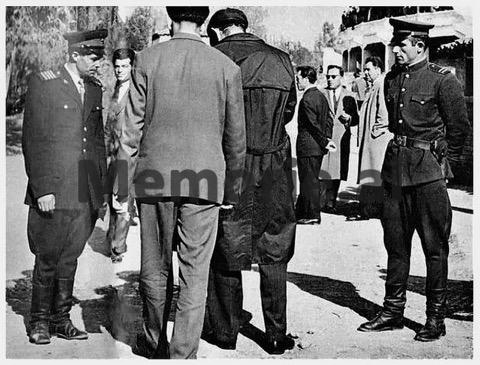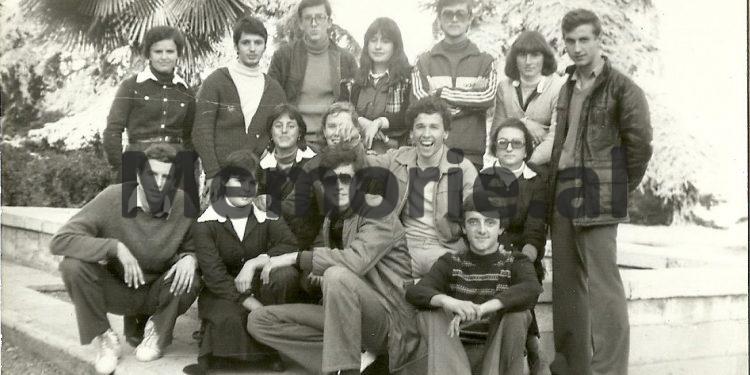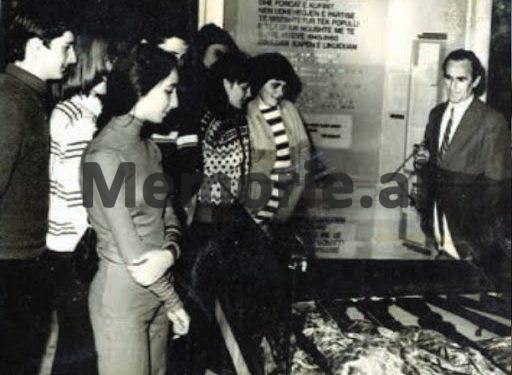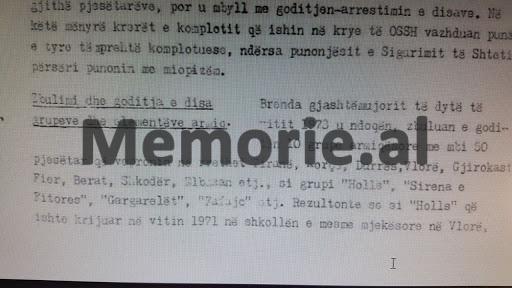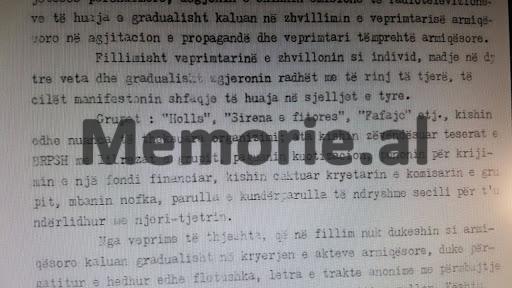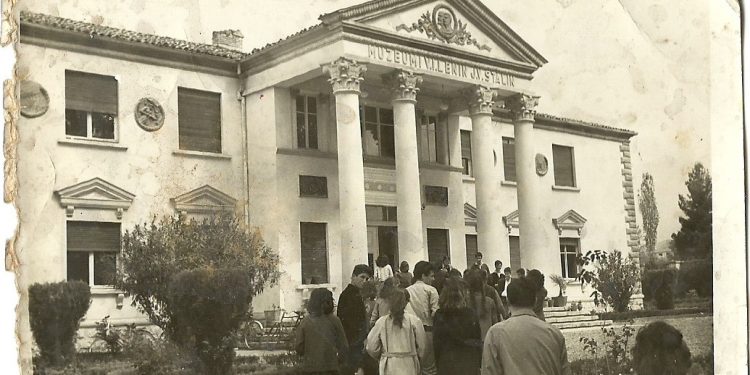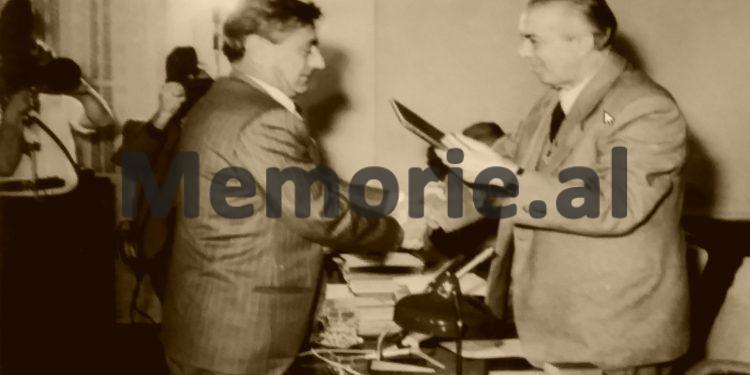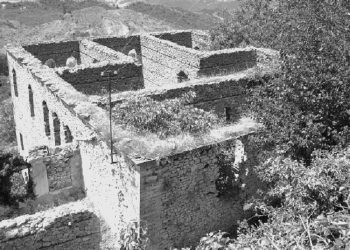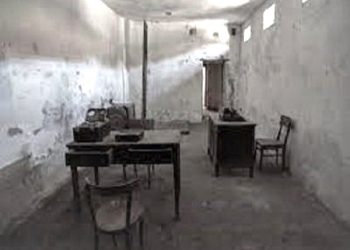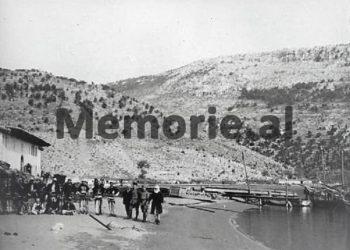Memorie.al publishes an archival document with the initials “Top secret” that has been extracted from the Archive of the Ministry of Internal Affairs, part of a voluminous file of the former State Security, which belongs to 1974, which talks about how they were discovered and several hostile groups were hit, such as: “Gargarelët”, “Holls”, “ The mermaid of victory ” and “Fafajc”, from Tirana, Lezha, Durrës, Korça, Berati, Shkodra, Fieri, Elbasani, Tropoja and Tepelena, who they carried out agitation and propaganda and threw leaflets and leaflets against the communist regime, which, among other things, reads: “Holls’, ‘Fafajc’ and ‘Victory Mermaid’ groups. had significant nuances of organization, they had replaced the cards of BRPSH (Albanian Working Youth Union), with the group booklets, paid quotas, worked to create a financial fund, had appointed the commissioner and chairman of the group, had nicknames, different slogans and counter-slogans, each to relate to each other…”!
After the speech of Enver Hoxha held on March 15, 1973 in the apparatus of the Presidium of the People’s Assembly where the main topic was “The fight against foreign and liberal performances and their impact on art, culture, literature and all the life of the country”, the words of which was preceded by the one held at the Politburo in January of that year where he criticized and hit for the first time the 11th National Song Festival on Radio-Television, in addition to party organizations and committees in Tirana and throughout the country where meetings began Many “in the spirit of Comrade Enver’s speech”, as well as the bodies of the Ministry of Internal Affairs and the State Security, launched a campaign with arrests and “revelations of hostile groups”. Among other things, this is made known by this archival document with the initials “Top secret” which was issued by the Archive of the Ministry of Internal Affairs and belongs to 1974, where it is about the “discovery, beating and arrest” of some ” hostile groups”, in Tirana and some other cities of the country such as: Durrës, Shkodër, Korçë, Elbasan, Fier, Tepelena and up to Tropojë. According to the document in question, which is a summary of a voluminous file where all the work of the State Security in the direction of these “hostile groups” in the period 1973-’74 has been “documented”, in fact they were nothing but some young people or groups of young people who followed the fashion at that time, wore their hair long, watched shows on foreign television channels in neighboring countries, etc., whom the State Security labeled and accused as “hostile groups”, who they had thrown out tracts and leaflets with hostile content ”. For more information about the document in question, which is published exclusively by Memorie.al
State Security Document: “Detection and crackdown on some hostile groups”
Within the second half of 1973, 10 hostile groups with over 50 members operating in the districts of Tirana, Korça, Durrës, Vlora, Shkodër, Berat, Fier, Elbasan, etc. were pursued, discovered and attacked. It turned out that “Holls” that was created in 1971 in the Medical High School in Vlora and that later spread to several districts, “Mermaid of Victory” that was created in Durres, “Fafajc” that was created in Lezha, “Gargarels” in Tirana, etc., initially had a tendency to vagabondage, debauchery, given to fashion and western way of life, listened to and saw shows on foreign radio and television, and gradually turned into hostile activities in agitation and propaganda and sharp hostile activities .
Initially, they developed the activity as individuals, even in two or three people, and gradually expanded their ranks with other young people, who manifested foreign performances in their behavior.
The groups “Holls”, “Fafajc” and ” The mermaid of victory “, had significant nuances of organization, they had replaced the BRPSH cards with the group booklets, paid the membership fee, worked to create a financial fund, had appointed the commissioner and chairman of group, carried different nicknames, slogans and counter-slogans, each to relate to each other.
From simple actions that at first did not seem hostile, they gradually switched to committing hostile acts, preparing and throwing anonymous leaflets, letters and tracts with pronounced hostile content against the Party and the popular power. This is how the group ” The mermaid of victory ” acted, throwing tracts at the high school of Agricultural Mechanics in Shkozet, Durrës, through which they called for a strong uprising against the popular power, the “Gargarels” who threw leaflets in Tirana, etc.
In all these groups there was a desire to flee abroad. They also came out against the speeches of comrade Enver Hoxha and the IV Plenum of the ALP, defending the enemies of the people, Fadil Paçrami and Todi Lubonja.
The peculiarity was their spread and spread throughout the country in a short time. Like “Holls”, “Victory Mermaid”, “Gargarels”, etc., from 2-3 people they had at the beginning, within 2-3 months they increased to 7-10 people.
They did not seem counter-revolutionary at first, as 90 per cent of them came from well-to-do families, some of whose parents were communists, which made it very difficult for Security officials to detect and crack down on them. that in the embryo.
The other feature was the combination of this hostile activity with that of the anti-party and declassed elements and that the hostile activity of these degenerate elements was more widespread in cities than in villages.
The difficulty in the work of the State Security Bodies for the detection and timely crackdown of this activity, was that while the activity in their ranks was spreading rapidly, it could not be ascertained from the first steps with counter-revolutionary nuances and goals, why most young people implicated, were of good political and moral standing. However, their decomposition was easier than with the elderly, but it was not easy from the beginning.
From the elaboration that was done, these features were achieved and it became possible to document, hit and prevent this hostile activity within 3-4 months. Of the 50 key members of these groups, only 11 were hit, while others were counseled and unmasked in the presence of their families, mass organizations, work centers, and schools.
Although most of the group members had good political and moral backgrounds, this did not become an obstacle to acting late, as was the case with the Holls group. Although the problem was centralized in the center, it was delayed by both the sector in the Ministry and the Branches of Internal Affairs in Tepelena, Tropoja and the Army Security.
“If the influences and manifestations of the revisionist way of life are not fought from the embryo, they open the way to the disintegration and degeneration of people who are so dangerous for the cause of socialism”, said Comrade Enver Hoxha in the IV Plenum of the Central Committee of the Party.
It turned out that behind the young people with good moral and political composition, stood and hid the hand of the enemy of the class, who encouraged and encouraged them for marked hostile activities. The fact that in this group were some enemy elements, who were the main ones who incited and led to sharp hostile actions others, raised the necessity of following to the end the connections and threads of this activity with enemy elements of other directions…
It follows that moral degeneration leads to political degeneration. Thus, most of the groups discovered and hit in 1973-’74, had been for motives of vagrancy, moral depravity, which led them to actions of a political nature. This was also influenced by the hostile work of the conspirators who were in charge of the Ministry of Internal Affairs and in practice, in most cases, the problems were divided: This is simple, it belongs to the police, this is the object of work for the Security, etc. The party, noting this perverse practice, criticized and set tasks for strengthening cooperation between the bodies, the crime prosecution sector in the center and districts.
It was better to follow the dynamics of raising the processing in the element with young ages and with the current hostile background and attitude, because the age up to 25 years occupied the largest number of processing and the declassified elements were not properly evaluated and followed in this regard. Instead of dealing with this element, they were actually dealing with those who were not amric, but who were influenced by enemies.
The attention, the Party stressed, should have been focused more on the ranks of the declassed, to go deeper, in order to be studied, selected and retired as qualified collaborators, performing more operational actions. Memorie.al




